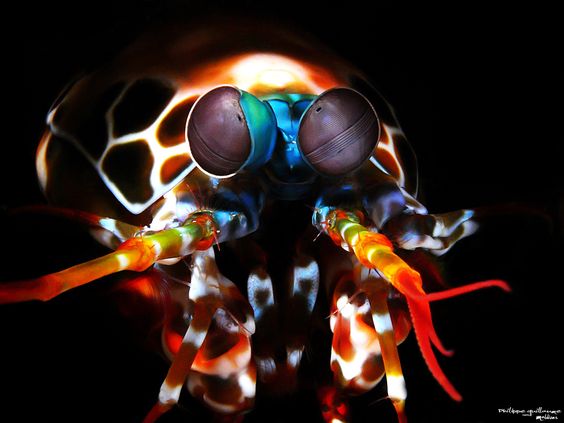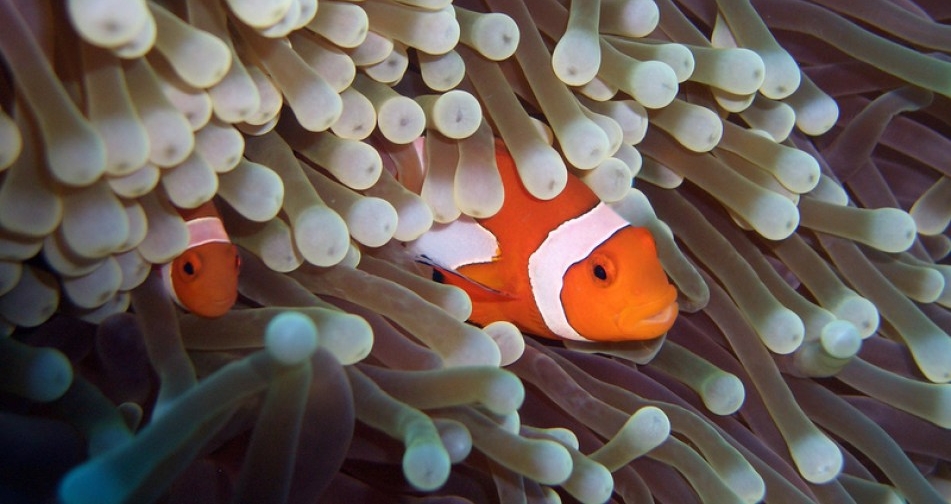KNOWLEDGE AND THE KNOWER—PERSPECTIVES
WHAT IS IT LIKE TO BE A BAT?
Little brown bat (Myotis lucifugus)
Photo credit: Michael Durham/Minden Pictures
We preface our Knowledge and Technology class activities with an exploration of animal and human sense perception. Our biological senses are our windows to the world. Reflect for a moment—in their total absence, could we know anything at all?
Each animal species has a limited sensory range. With the development of ever more sophisticated scientific instruments, technology has extended the biological range of human perception to more than 40 orders of magnitude!
The printing press, and radio, television and film, expanded our capacity to disseminate knowledge on a global scale. In the current digital age there have been accelerated and unprecedented gains in how and what we know. But there is no such thing as a free lunch. Digital technology has also unleashed some disturbing, even Promethean, complications.
“Estonian biologist, Joacob Johann von Uexküll (1864-1944) “coined the term Umwelt—the surrounding world—to describe the unique and therefore limiting, sensory world of each animal species, including our own.””
Ixodus ricinus Photo: Richard Bartz
CLASS ACTIVITY I: TICK ALGORITHM
Start by having a student (who has proven theatrical talent) read out von Uexküll's quote which describes the limited and austere sensory world of a blood-sucking tick.
“Once the female has copulated, she climbs with her full count of eight legs to the tip of a protruding branch of any shrub in order either to fall onto small mammals who run by underneath or to let herself be brushed off the branch by large ones. The eyeless creature finds the way to its lookout with the help of a general sensitivity to light
The blind and deaf bandit becomes aware of the approach of its prey through the sense of smell. The odor of butyric acid, which is given off by the skin glands of all mammals, gives the tick the signal to leave its watch post and leap off. If it then falls onto something warm—which its fine sense of temperature will tell it—then it has reached its prey, the warm-blooded animal, and needs only use its sense of touch to find a spot as free of hair as possible in order to bore past its own head into the skin tissue of the prey.
Now, the tick pumps a stream of warm blood slowly into itself. Experiments with artificial membranes and liquids other than blood have demonstrated that the tick has no sense of taste, for, after boring through the membrane, it takes in any liquid, so long as it has the right temperature. If, after sensing the butyric acid smell, the tick falls onto something cold, then it has missed its prey and must climb back up to its lookout post. The tick’s hearty blood meal is also its last meal, for it now has nothing more to do than fall to the ground, lay its eggs, and die. ”
1. Compose an original four line poem called The Tick consisting of two sequential rhyming couplets. Use the opening stanza of William Blake's famous 1794 poem The Tyger as your model:
Tyger Tyger burning bright,
In the forests of the night:
What immortal hand or eye,
Could frame thy fearful symmetry?
2. Address with your partner the following generative questions:
To what extent does the tick's sensory input "map" correspond to the actual "territory" of its environment and survival needs?
To what extent can meaningful parallels be made between tick and human sense perception?
To what extent does the Tick know or understand the algorithm that defines its existence?
CLASS ACTIVITY II: ANIMAL SENSES GALLERY
Animals have evolved specific sensory abilities much wider than our own. In the absence of scientific instruments these alternative sensory worlds would be inaccessible to humans. The Animal Senses Gallery (and the slideshows which follow later) should be made as interactive and generative as possible. Students should be given the opportunity to recognize the images, share their general and zoological knowledge and make inferences and connections. The captions will help.
Humans have three color cone receptors; mantis shrimps have 12-16, have six more just for the ultraviolet range, and can perceive polarized light.
Experiments have shown they are not good at discriminating color conventionally, when compared to other creatures. Why did such bizarre complexity evolve? What can it be like to dwell in their phantasmagorical sensory world?
Photo: Philippe Guillaume: Vert mouche, Maldives
Infrared
Photo: unknown
Night vision
Photo Eleur.com
Olfaction
Photo: Dogpedia
Ultraviolet
Photo: Colors of Life, California Academy of Science
Visual acuity
Photo: Brian Kushner/Audubon Photography Awards
Subsonic
Photo:: imageBROKER/Alamy
Electroreception
Photo: Melbourne Zoo
Magnetic Field
Photo: Tom Quinn, University of Washington
Color vision
Photo: Alan D. Wilson, www.naturespicsonline.com
Echolocation
Photo: Conservation International
Polarized Light
Photo: Yuk Yam, CC BY-NC-SA
Tactile
Photo: Kenneth Catania
As the interactive presentation and discussion proceeds students should be encouraged to create a scorecard for humans. Taking each sense category in turn, they should provide an estimate for humans, on a scale of zero to ten (with ten being the benchmark score for the exemplar animals). Ask a student to summarize class findings, integrating the following Knowledge Question which anticipate the next unit of inquiry.
Given that these examples of animal sensory ranges are wider than our own; how did we find out about them?
Can we be confident about our findings?
“A well trained human—a perfumer, for example—can identify at best a few thousand smells, while dogs can apparently distinguish any number of individual humans by scent alone. Bloodhounds perform this feat with no more odor than passes through the soles of a person’s soles.”
INTERLUDE: WHAT IS IT LIKE TO BE A BAT?
One way of looking at our own existential predicament is that we live in the metaphorical prison--a unique, embodied subjectivity--with our senses our sole windows to experience.
Umwelt refers the limits imposed by of a particular set of senses operating in a certain range. The tick, sensory world consisted of little more than smelling butyric acid and detecting warm temperature and hairiness. This means that they are oblivious to most aspects of their surrounding environment. This is a stark and far reaching insight that applies to other sentient animals. We can imagine a clown fish and sea anemone living together physically but inhabiting different sensory worlds.
Photo: Philip Chow
FOR FURTHER DISCUSSION
By now students will make connections spontaneously with human knowing in all its capability and fallibility. The relevance of "The Map is not the Territory" was made explicit in the first activity. Referring back Plato's Allegory of the Cave may raise conversations to even greater heights. If time permits, and for mind-twisting fun, invite the students to address the famous Wittgenstein and Nagel quotes below.
Next, curtail further metaphysical speculation, at least for now, and revert to the realm of objective science. The Extended Phenotype: 41 orders of magnitude unit explores how technology extends our sensory range.
IF A LION COULD TALK
“If a lion could talk, we would not understand him.”
“Our own experience provides the basic material for our imagination, whose range is therefore limited. It will not help to try to imagine that one has webbing on one’s arms, which enables one to fly around at dusk and dawn catching insects in one’s mouth; that one has very poor vision, and perceives the surrounding world by a system of reflected high-frequency sound signals; and that one spends the day hanging upside down by one’s feet in an attic.
In so far as I can imagine this (which is not very far), it tells me only what it would be like for me to behave as a bat behaves. But that is not the question. I want to know what it is like for a bat to be a bat. Yet if I try to imagine this, I am restricted to the resources of my own mind, and those resources are inadequate to the task. I cannot perform it either by imagining additions to my present experience, or by imagining segments gradually subtracted from it, or by imagining some combination of additions, subtractions, and modifications.
”
Titian (1548-49) Sisyphus. Oil on canvas. Prado, Madrid
"The Struggle itself toward the heights is enough to fill a man's heart. One must imagine Sisyphus happy."
Just saying here (without irony): to what extent is the tick like Sisyphus when it fails to find a blood victim and has to climb back up the tree?
Camus, Albert. (1991) The Myth of Sisyphus and Other Essays. Translation: Justin O'Brien. Vintage Books, New York. Originally published as Le Mythe de Sisyphe (1942) Librairie Gallimard, Paris.
The same platypus under visible light, ultraviolet light, and yellow-filtered UV light.
Image credit: Jonathan Martin/Northland College


















